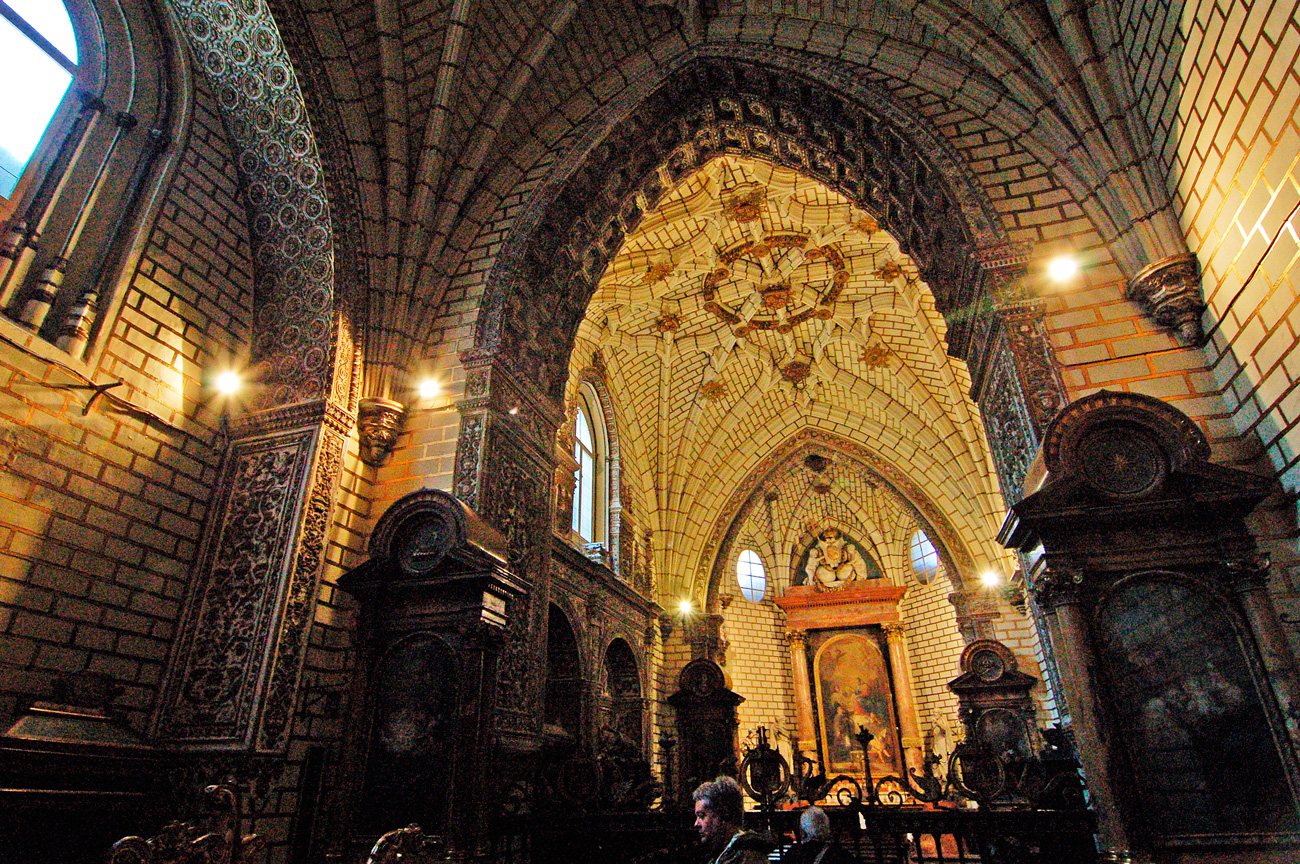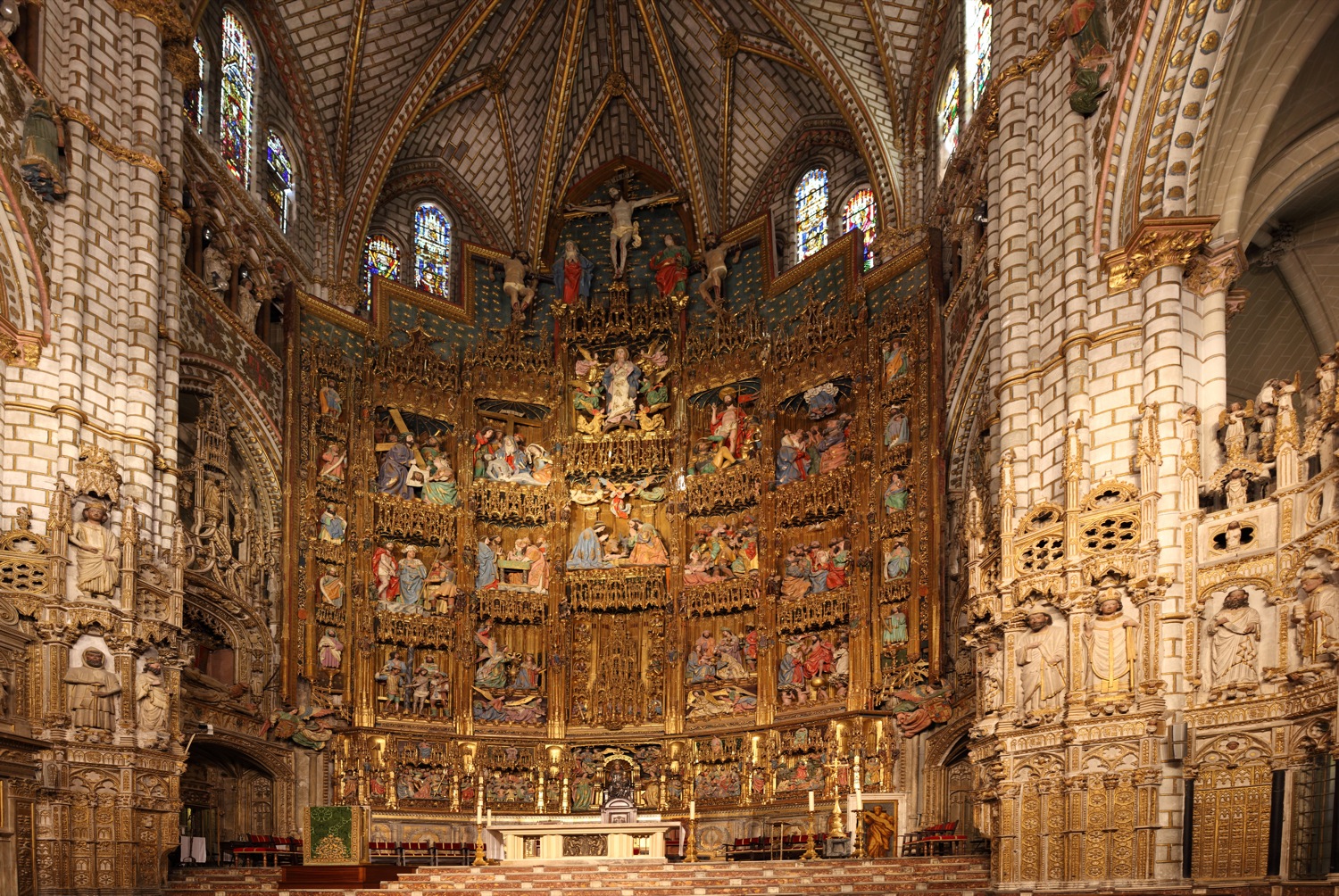The Primate Cathedral of Saint Mary of Toledo is a Roman Catholic cathedral in Toledo, Spain. It is the seat of the Metropolitan Archdiocese of Toledo.
The cathedral of Toledo is one of the three 13th-century High Gothic cathedrals in Spain and is considered, in the opinion of some authorities, to be the magnum opus of the Gothic style in Spain. It was begun in 1226 under the rule of Ferdinand III and the last Gothic contributions were made in the 15th century when, in 1493, the vaults of the central nave were finished during the time of the Catholic Monarchs. It was modeled after the Bourges Cathedral, although its five naves plan is a consequence of the constructors' intention to cover all of the sacred space of the former city mosque with the cathedral, and of the former sahn with the cloister. It also combines some characteristics of the Mudéjar style, mainly in the cloister, with the presence of multifoiled arches in the triforium. The spectacular incorporation of light and the structural achievements of the ambulatory vaults are some of its more remarkable aspects. It is built with white limestone from the quarries of Olihuelas, near Toledo.
It is popularly known as Dives Toletana (meaning The Rich Toledan in Latin).
For many years, an unwritten popular tradition has held that there was originally a church from the era of the first Archbishop Eugene (Saint Eugene of Toledo) located in the same place as the present cathedral. This church was consecrated for a second time in the year 587, after having undergone some alterations, as testified by a 16th-century inscription preserved in the cloister which states:
In the name of the Lord the Church of Saint Mary was consecrated as Catholic, the first day of the ides of April, in the joyful first year of the reign of our most glorious king Flavius Reccared, Era 625 .
The city had been the episcopal seat of Visigothic Spain. The numerous Councils of Toledo attest to its important ecclesiastical past. Also, the abjuration of Arianism on the part of Reccared occurred there. The Muslim invasion did not immediately eliminate the Christian presence and the bishopric remained established in the church of Saint Mary of Alfizén.
The Visigothic church was torn down and the main mosque of the city of Toledo was erected in its place. Some investigators point out that the prayer hall of the mosque corresponds with the layout of the five naves of the current cathedral; the sahn would coincide with part of the current cloister and the chapel of Saint Peter and the minaret with the belltower. Using certain archeological data it is possible to discern an Islamic column mounted inside of the chapel of Saint Lucy; the marble shafts that decorate the exterior of the choir are an improvement of an old Muslim construction, and the intertwined arches of caliphate style in the triforium of the main chapel and of the ambulatory coincide with the Muslim construction tradition of Cordova.












